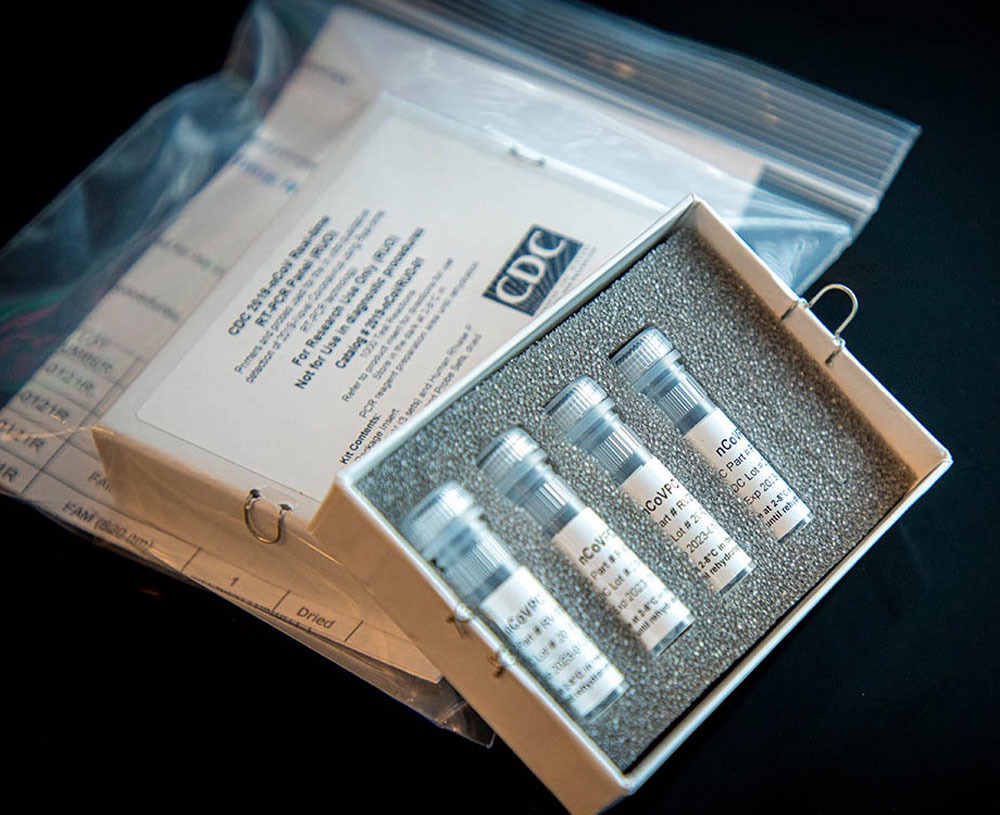
March 12, 2020; New York Times and Boston.com
As the COVID-19 virus continues to spread across the US, the reality of how unprepared this country is to respond looms large. Two of the issues have dominated concern the need to find a means to plug vital holes in our public health system.
The first is finding the funds to test for the virus and pay for those tests. Forty million people in this nation are underinsured and could be stuck with a hefty medical bill. Another 28 million have no health insurance at all. Both of these issues played out in the halls of Congress and in communities across the country.
The second issue is how to make sure those who fall ill to the virus don’t lose paychecks because they are staying home, as public health officials have directed.
The bungled issue of adequate testing has been a frustration since the virus was first detected. And the reasons for the lack of tests given have not satisfied anyone, especially those seeking the test.
“The system is not really geared to what we need right now,” said Dr. Anthony S. Fauci, who leads the National Institute of Allergy and Infectious Diseases, in testimony before the US House Committee on Oversight and Reform on Thursday, March 12th. “It is a failing. I mean, let’s admit it. The idea of anybody getting it easily the way people in other countries are doing it, we are not set up for that. Do I think we should be? Yes. But we are not.”
While this was an honest response, it does not help the people with symptoms who were told that they could not be tested because there were not enough tests to go around. According to public health experts, each day that people do not know whether they have the virus, they risk spreading it more widely.
In large communities, many more tests are needed. “In a large city, you should be doing at least 1,000 a week, and ideally you’d be doing 10,000,” says Marc Lipsitch, director of the Center for Communicable Disease Dynamics at the Harvard T.H. Chan School of Public Health. Lipsitch adds the US Department of Health and Human Services has allocated a “laughably small number of tests” to look for signs of community transmission. In the state of Washington, where more than 378 people have tested positive and over 30 people have died, tests are being rationed for the most vulnerable. Many there will go into self-quarantine for safety’s sake, with the understanding that they will never truly know if they had the virus or not.
Sign up for our free newsletters
Subscribe to NPQ's newsletters to have our top stories delivered directly to your inbox.
By signing up, you agree to our privacy policy and terms of use, and to receive messages from NPQ and our partners.
The issue of who will pay for testing and care also looms large for many, especially those who live from paycheck to paycheck and for whom a small extra expense can throw their budget into havoc. It was gratifying to know that a number of members of the US House of Representatives came fully prepared to question Robert Redfield, director of the Centers for Disease Control and Prevention on just this point.
US Rep. Ayanna Pressley (D-MA) pressed Redfield as to what an uninsured hotel worker in Boston with no savings should do if he develops symptoms? She pointed out that the CDC website offers little guidance. Redfield responded that the costs of both testing and treatment would be covered, and that he would make sure that the website was updated to clarify this.
Representative Katie Porter (D-CA) had, perhaps the most heated exchange with Redfield as she whiteboarded all of the various expenses that were involved in testing and treatment, reaching a total of $1,331. She pushed Redfield repeatedly, saying, “You need to make a commitment to the American people, so they come in to get tested.” The clearly browbeaten Redfield finally replied, “I think you’re an excellent questioner, so my answer is yes.” But whether he will make good on that promise remains largely in the hands of the legislature and the president.
Congress has begun to respond. The House passed the Families First Coronavirus Response Act at the end of last week by a vote of 363–40. The legislation includes sick leave for most affected workers and funds for testing Americans, including the uninsured. But a last-minute snag may cause a need for another vote in the House on Monday morning. Apparently, there were some “technical” issues that did not get into the bill and will need to be added. While this should not impact its passage in the House, it will give the small businesses that are most unhappy with the paid-sick-leave component time to do more lobbying of the Senate.
As the revised bill heads to the Senate, Majority Leader Mitch McConnell (R-KY) said he hopes for swift passage, but a vote has not yet been scheduled. And, as is the custom of this Senate, there are already a number of pending poison-pill amendments (including anti-choice ones) circulating that could jeopardize passage.
One issue in dispute concerns tax credits. The House bill provides tax credits for businesses with fewer than 500 employees, but excludes larger businesses, most of whom (89 percent) already provide paid sick leave (meaning that for most large businesses, tax credits would simply subsidize pre-existing policies). Still, some senators want large businesses included. Small businesses, although covered in the bill, are pushing for the tax credit to be payable in advance rather than having to wait for a rebate at the end of the quarter.
Adding to the complications is that not every senator is on board with the House approach. Senator Ron Johnson (R-WI) stated his opposition to the paid sick leave requirement in the House bill clearly, drawing a line in the sand: “I hope the Senate will approach this with a level head and pass a bill that does more good than harm—or, if it won’t, pass nothing at all.”
Most likely, the Senate will pass some variant of the House bill, and that bill will be signed into law. Still, the wrangling does not inspire confidence at a time when restoring the public’s confidence in the US public health system is imperative.—Carole Levine












